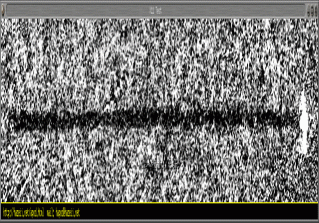Hmmm. I thought I did fairly well, considering I started out with an image of an insect that is most likely a different species, different size, different orientation, different speed, etc. It's a model, and models have limitations.DC wrote:I think it is good someone is trying to reproduce this effect with bugs, which I don't think will work.
Has it yet been established which direction the insect was traveling? I don't think so. The anatomy would be essentially reversed depending on when the strobe fired.The image below is an invert of my previous double diff. I have labeled the image components the way I understand the bug theory. My concerns are:
Let's separate the wing from the thorax. OK, we know insect wings are attached at the thorax, but we don't have distinct lines, so some of that is guesswork. The wings, though, extend beyond the reach of the body. Does anything else? Yes. Legs can, A long tail would do the same, as would extended antennae. I think the bluish wisps are probably reflections from the wings, but it's possible they are reflections from other body parts. See my post earlier where I show that one of the winglike shapes actually comes from the reflection of the head and thorax in my model.The wing/thorax refections are very narrow, which cannot be reproduced with a blur effect.
Assuming what's pictured is wings, though, recall that we're talking about a period of time during which A) the insect is traveling through space ,B) the wings are moving relative to the body. and C) the wings are changing orientation. This last point is key. We're not simply seeing an illuminated wing. We're seeing specular reflections from the wing. Specular reflections only happen when the angle is just right. In the case of the head and thorax, the angle remains relatively constant, so the specular light trail follows the path of the insect. In the case of the wings, though, the location of the specular light depends upon the position of the insect AND the orientation of the wing. Thus it is possible for the apparent location of the specular reflection to be stationary or even move in the opposite direction as the insect. Obviously, I could not include this aspect into my model because I was essentially moving a bee without flapping its wings.
I believe this is a consequence of the change in orientation of the wings. The left wing will sparkle at a different time than the right wing. Both will sparkle when they are facing the same direction, but this same direction happens at different phases of the flapping cycle. How far apart they are will depend upon the orientation of the bee to the flash and what the change in orientation is like of a wing during this kind of flight (I would expect a different pattern for hovering flight, which I think is very close to what my model was doing).The wing reflections attach too neatly, with almost geometrical precision, to the thorax reflections.
There is, but you have to factor time into the equation. We are not looking at an instant in time. We are looking at a segment in time. I think the two wing images were made at different times and may even record one wing in its up position and the other in its down position while the insect is nevertheless horizontal. This is possible if the two wings are imaged out of phase from each other. Believe it or not, I don't have the time or equipment to conduct tests along these lines. If I did, I would.There is no room for the required connectional anatomy here.
No. Remember, the insect is moving. At the instant the strobe starts, the rear end of the thorax is behind the position of the leading edge of the abdomen when the strobe finishes. How much overlap is related to the relative speed of the insect and the duration of the flash.Also, the thoraxic reflection should be a complete circle, which should not intersect the abdominal oval.








